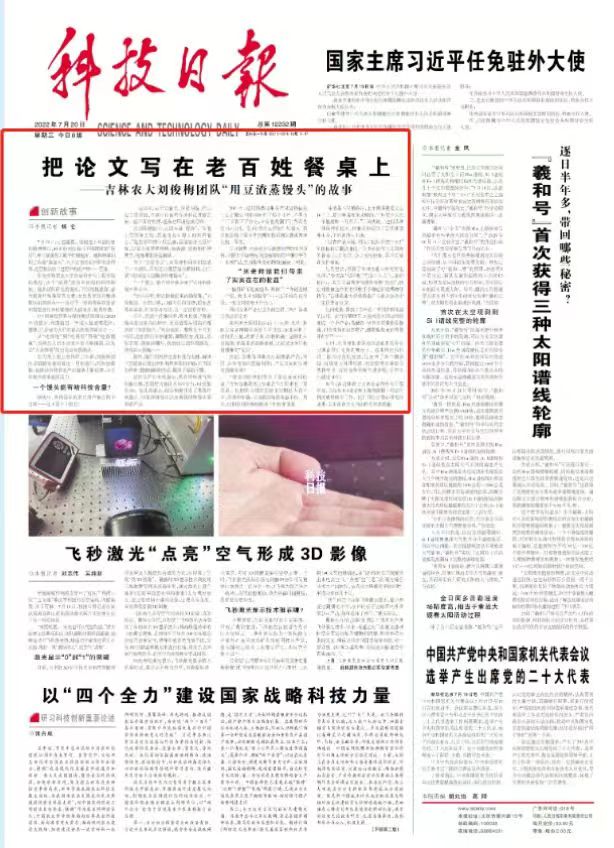"Replace China"? Behind the "chip ambition" India
Author:Global Times Time:2022.07.01

Researchers work in the semiconductor manufacturing laboratory located in Bandolore, India. (AFP)
Reporter Yuan Jirong Yang Shasha
Editor's words: A senior executive of Tata, the largest group company in India, recently announced a high -profile announcement that semiconductor manufacturers are facing "geopolitics concerns" and "natural disaster risks" in Asia, and India will become a "replacement destination." The executive emphasized that under the "China" strategy, more multinational companies will invest in India. Over the years, India has revealed to the outside world from time to time, and the United States has also encouraged India to become "Chinese replacement." What is the status quo of the Indian chip industry? Can it be replaced by China in the chip industry? "Global Times" reporters investigated this.
Single subject "Special Chief Student"
"Nikkei Asia" recently reported that "India was touted as chip investment selection in risks" said that Lajan Mankam, chief executive of Tata science and technology in India, said The reason is that India has a superior geographical location and convenient transportation. According to the Indian Economic Times report, Roy, the executive director of the Singapore Star Shin Bank Telecom, Media and Technology Executive Director, said that with the implementation of the "China +1" strategy of the multinational company, India may become the preferred destination of core semiconductor investment.
When talking about Indian chips, many people often disagree. In fact, India is the world's chip design country. "Global Times" reporters have many times to India's "Silicon Valley" Bangalore International Science and Technology Park. The high -rise buildings are lined up. Many people can't think of it. It is still one of the main chip design centers in the world.
The U.S. Texas Instrument Corporation has a high -tech R & D center at Bangalore for a long time for semiconductor design. Although there is no well -known chip design company in India, Bangalore has half of the world's semiconductor design service companies, such as the British ARM, the United States Qualcomm, Intel, and other famous semiconductor companies in India.
As a "special student" in the field of chip design, the ambitions and dreams of Indian chip manufacturing have not stopped. In the early 1990s, India started the development of the chip industry, but in 1998, the nuclear test suffered US sanctions, which made Indian chips develop into a bubble. Vietnam's factories; in 2012, India formulated a national electronic incentive policy to develop the development of the chip industry again. The local government said that the wastewater wastewater generated by chip manufacturing would affect the local environment, but the media disclosed that the real reason is that the factory will cause the local fragile power supply to have an irreplaceable vacancy.
Compared with the previous abortion of the Indian government chip manufacturing policy, the ambition and appeal of Indian chip manufacturing since the new crown pneumonia's epidemic have stronger, stronger, and more urgent. In May 2020, the Indian government announced plans to establish a chip production department. In December of the same year, the Indian government approved the financial incentive measures to Samsung's display in India; in December 2021, the Indian government approved a incentive plan of about $ 10 billion It aims to attract global chip and monitor manufacturers to enter India, and the Indian government will provide eligible companies with 50%of financial support for high project costs.
According to reports, ISMC recently stated that considering investing in a chip foundry for $ 3 billion in Kanatakn, India, 65 -nanometer chips, and high -tech support for Israel High Tower semiconductor. Indian Mining Group Wanda Tower signed an agreement with Foxconn in Taiwan, which started semiconductor production in 2025 and invested about $ 10 billion. The Indian Electronics and Semiconductor Association reports predict that the market size of India's semiconductor will increase from US $ 27.15 billion in 2021 to US $ 64.05 billion in 2026.
Grasp the "window period"?
India's urgent promotion of the chip industry's transformation is intended to seize the "window period" brought by the global chip shortage. Affected by the geopolitical and economic competition between China and the United States and the epidemic of new crown pneumonia, multinational companies tightened the pace of production in China, and chip production capacity in Southeast Asia was also close to saturation, and India became the best choice.
Geng Bo, deputy secretary -general of the third -generation semiconductor industry technology innovation strategy alliance, told the Global Times reporter that from the perspective of the supply side, the epidemic swept the global interruption of semiconductor supply, and the shortage of Indian chips was particularly prominent. The Indian government has realized that it is not reliable to fully depend on the global supply chain in key areas such as semiconductor chips. From the perspective of demand, India has a large number of automobile manufacturing and electronic products manufacturing. In 2019, India has become the world's second largest mobile phone manufacturing country. The market demand of Indian chips is very strong.
In addition, the West also helped India's "carried sedan". Han Xiaomin, general manager of Jiwei Consultation, told the Global Times reporter that the current development of India's semiconductor is the United States support. The United States Ambassador to India said that India has the opportunity to fully integrate the Indo -Pacific supply chain, including the semiconductor industry, becoming a substitute for China. The Indian Electronics and Semiconductor Association recently signed a memorandum of understanding with the semiconductor industry association representing the US chip industry to determine the potential cooperation field between the two countries. Choosing to cooperate with India is not only to see many semiconductor design talents in India, but also want to deepen cooperation with India to improve its strength to develop chips and reduce dependence on the Asian chip system. The more important reason for India to strive to cultivate the chip industry is to reduce dependence on China. Indian chips depend on chips produced by China and Southeast Asia. According to statistics from the Indian government, as of March 2020, India's import value of 1.15 trillion rupees (100 Indian rupees or about 8.48 yuan) electronic components, of which about 37%came from China.
Weakness of India
But India's development of semiconductor industry is also very obvious. So far, the Indian government's support for the chip industry is more policies, and financial support is not enough. Han Xiaomin believes that the semiconductor industry is a capital and technology -intensive industry, and the fab is extremely expensive. Even the relatively small factories, the construction cost is billions of dollars. India invested only $ 10 billion, and financial support was not enough. In the current situation of the limited financial resources of the Indian government, it will be the key to the success of the plan for the success of the external funding of semiconductor leading enterprises, but it will be observed whether it can get this support.
Secondly, India currently lacks manufacturing capabilities. It is understood that the Indian Space Research Organization and the Indian Defense Research and Development Organization currently have their own wafer factories, but their production capacity is only to meet their own needs, and at the same time, they have not achieved the level of complex craftsmanship to meet the production of semiconductor industrialization. In addition, other Indian technology and talent reserves are insufficient. India's IT enterprise reaches the top level in the field of service outsourcing, and has a large number of chip design talents, but Geng Bo said that the chip industry is a large industrial chain such as packaging and testing. India is only good at designing. Other technical reserves are almost zero. Related talent reserves are serious. Compared with chip design talents, the cultivation of talents requires longer cycle and industrial support.
Third, India's resource efficiency is insufficient and infrastructure construction is backward. The semiconductor industry has a large demand for water resources, and at the same time requires extremely stable power supply, as well as a large amount of land and powerful infrastructure. India's "Commercial Standards" analysis believes that India has hundreds of problems in these areas.
In addition, the international situation is not completely beneficial to India. Indian South Asian scholar Raja Mohan said that becoming the world's semiconductor center is the most ambitious and challenging task of the Indian government. This requires integration of various technologies, industrial capabilities and global partners. Geng Bo believes that even with the support of the United States, according to the existing foundation of India, the development of chip manufacturing is by no means easy. Moreover, the United States will not give core manufacturing technology to India, and it will only create a low -end role in India.
Long Xingchun, Executive Dean of Chengdu Shitong Research Institute, said in an interview with the Global Times reporter that compared with China, the Indian chip industry is weak and the business environment is poor. From the perspective of investment, India's conditions are even inferior to Indonesia. , It is not the first choice for multinational companies in Asia. Therefore, the investment of multinational companies in the Indian chip industry is mostly the mentality of "trying". Similar to the large -scale layout of Samsung Semiconductor in China, it is difficult to achieve in India.
Long Xingchun said that Indians like to "make concepts", but the high -tech industries such as semiconductors need real talents. He believes that it is difficult for the Indian chip industry to really replace China, and the industry will not grow much in India in the short term.
Some analysts said that the overall international environment of the manufacturing chip in India is better than China, but it does not match the ambition and ability. The Indian government's development of the chip manufacturing industry is increasingly like a "big cake". In the case of election or public opinion, move it out to inspire. ▲
- END -
Science and Technology Daily head topic: The story of "steaming steamed buns with bean dregs" in Jilin Nongda Liu Junmei team

【Innovative Story】On July 19, it was midsummer. The roadshow of the double -crea...
Luo Yonghao, true man

He is the first generation of Internet celebrities in China.When he was a teacher ...